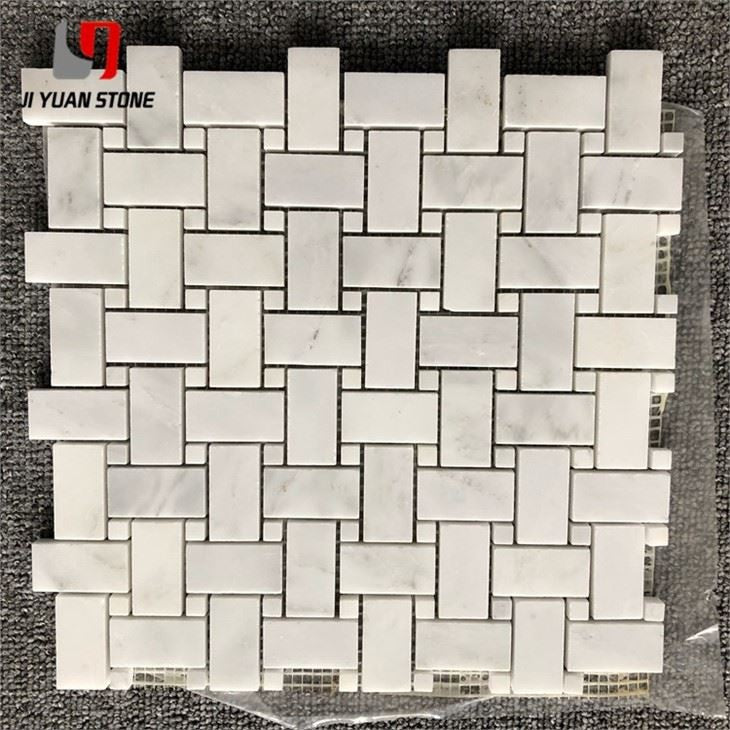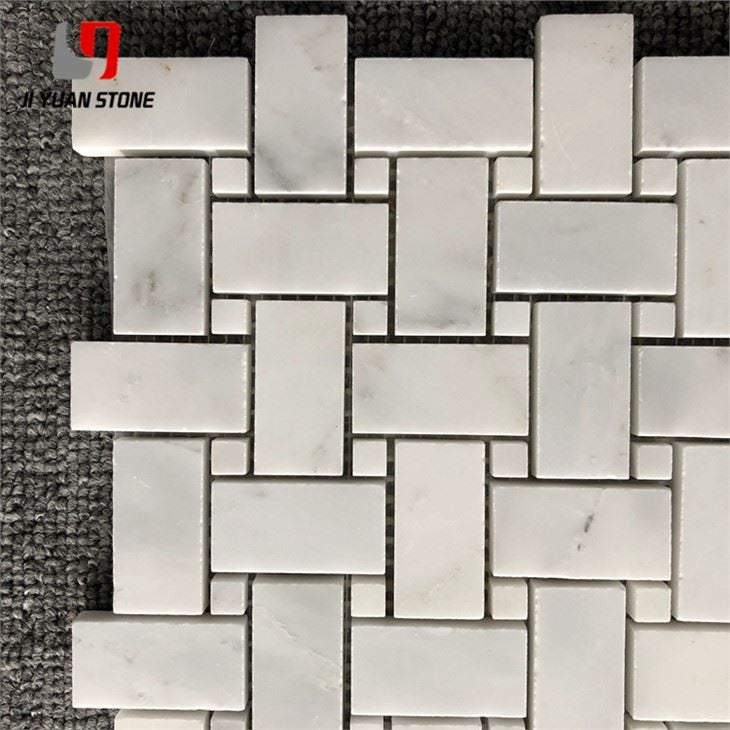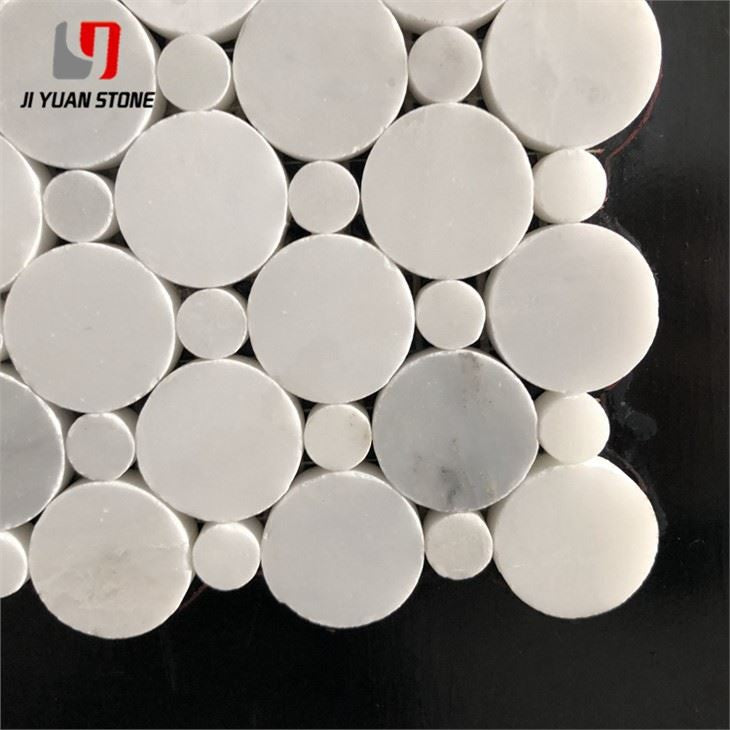Mosaic Arabesque Wall Tile is a premium natural marble mosaic that combines timeless beauty with durability, making it ideal for walls, backsplashes, and decorative interior accents. Its elegant geometric pattern and refined marble tones enhance both modern and classic interior designs.
Mosaic Arabesque Wall Tile Installation & Rust Spot Formation
Installation Process
During installation, dry hanging construction technology should be used whenever possible. If dry hanging is not feasible, water use should be minimized. Key considerations:
- Base Layer Water Content: Keep below 4% to prevent moisture issues.
- Base Preparation: Properly isolate water to reduce risks associated with moisture affecting the tile.
Post-Paving Care & Maintenance
1. Wet-Laid Mosaic Arabesque Wall Tiles
- Avoid polishing or crystalline finishing for 28 days after installation.
- Keep surfaces clean and dust-free.
- Allow natural evaporation of moisture by avoiding covering the tiles.
2. Seam Treatment & Defect Repair
- After curing, open seams and remove dust from both sides of the gap.
- Adjust glue mixture and seal seams properly.
- Repair surface defects to prevent water infiltration and long-term moisture issues.
What Are Rust Spots?
Rust spots form when iron-containing substances enter the marble mosaic or when internal iron compounds react with environmental chemicals, producing yellow or yellow-brown stains.
Chemical Explanation:
Rust requires three elements:
- Fe (Iron)
- O₂ (Oxygen)
-
H₂O (Water)
When iron reacts with oxygen and moisture, oxidation occurs, resulting in rust spots.
Causes of Rust Yellowing in Marble Mosaic
1. Primary Rust Spots
- Some marble mosaics naturally contain iron oxide, including Gold Wire Beige, Silver Wire Beige, Saanna Beige, and White Hemp.
- In humid environments, these iron compounds oxidize upon exposure to air, causing yellow stains.
- Water movement through micropores in the mosaic can create irregular discoloration (chloasma) on the surface.
Mosaic Arabesque Wall Tile combines luxurious aesthetics with proper installation and maintenance, ensuring a long-lasting, sophisticated look for interior walls













